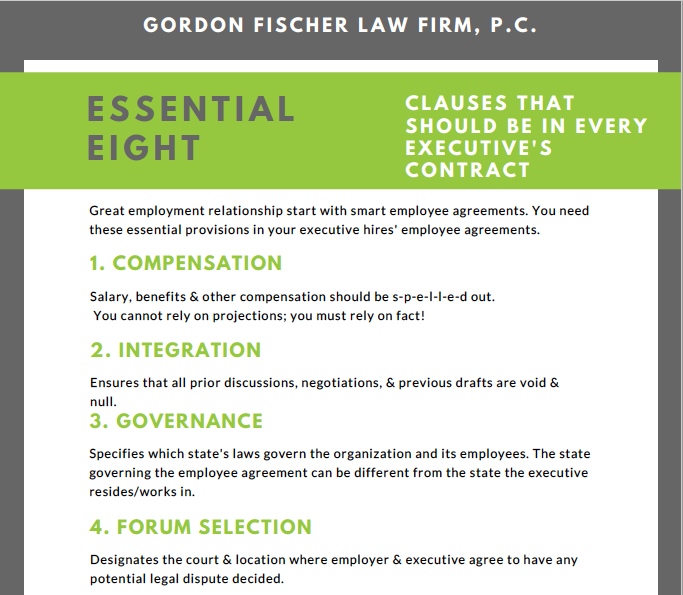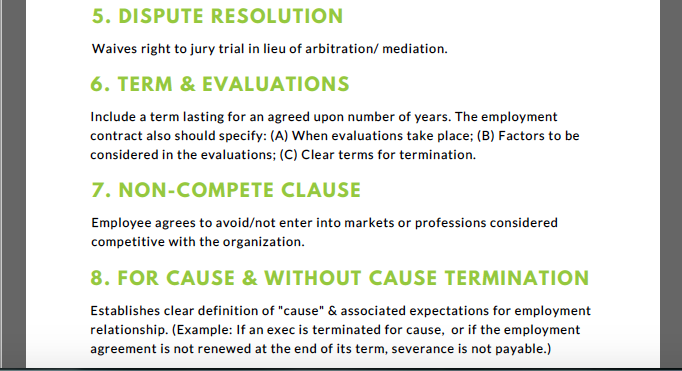Employment policies are vital to the well-being of your nonprofit. Such policies set workplace expectations, define work guidelines, reduce or eliminate confusion and misunderstanding, and provide steps for any necessary disciplinary action. Because every nonprofit organization is unique, your organization may well need a particular set of specific policies. However, the following are the general ones that benefit most all nonprofits.
Benefits of Employment Policies
An official set of employment policies provides many benefits for your nonprofit. For nonprofit employers, policies capture the values you wish to instill in your workforce, outline the standards of behavior you expect, and provide a clear guide for rights and responsibilities.
Instituting strong, fair, and unambiguous policies not only contributes to a happier workforce it can also improve employee retention. Further, employment law is vast, complicated, and can be tricky to navigate. Well-drafted employment policies can also help you avoid legal issues and costly mistakes.
Employee Handbook
Employee handbooks are not required by law, but having one is in the best interest of your nonprofit and those who work for you— even if you have just one employee! A good employee handbook effectively communicates the nonprofit’s policies and procedures and makes clear the rights and responsibilities of employees in your organization. Many disputes can be avoided by a clear, easy-to-read, and straightforward employee handbook.
Employment Agreement
Not to be confused with the handbook, an employment agreement sets the conditions, terms, and obligations between you as the employer and an employee. Employment agreements often include details regarding salary, benefits, paid time off, work schedule, mandatory mediation/arbitration, and defining the at-will employment relationship. Employment agreements need to be individualized to suit each employment relationship. It is considered a binding contract that should be administered in writing and signed by both employer and employee.
Formal Performance Review
Formal performance reviews are an assessment of an employee by a supervisor and the employee themselves. It’s a two-way, not a one-way discussion! The review should be based on jointly pre-determined goals and performance objectives. While often overlooked (and sometimes dreaded), performance reviews are of great value to nonprofit employers and their employees.

You should have in place a standardized form and consistent processes for conducting individual performance reviews of all employees. Evaluating the quality of an individual’s work, ability to meet goals, communication skills, adherence to your nonprofit’s mission, attendance, and dependability, among other criteria, is key to effective workforce management and to building trust with employees. You may also consider whether performance reviews for board members would be advantageous to the organization.
Employee Personnel File
A personnel file is a hard copy folder and/or digital file that contains information related to every new, existing, and former employee. Knowing what needs to be stored (and what should not) in a secure personnel file will help your nonprofit in promotion and termination decisions; provide a means of tracking vacations, training, and achievements; and is necessary to comply with regulations.
A personnel file should only contain items related to his or her job or employment status. These include, but are not limited to:
- Application and resume
- Signed acknowledgment page from the employee handbook
- Pay information including time sheets, W-4s, and withholding forms
Just as important as having the right information in a personnel file, is to avoid placing the wrong documents in a personnel file. Some items that should not be in an employee’s personnel file include:
- Medical information and accommodation requests
- Whistleblower complaints
- Court orders, such as garnishment or restraining orders
Independent Contractor Agreement
Self-employed, freelancer, consultant…people who provide goods or services to your nonprofit, but are not your employees, are considered independent contractors. Independent contractors differ from employees in that they control their financial and work-related relationships and pay their own self-employment, Social Security, and Medicare taxes.
When you hire an independent contractor, you should have a written and signed contract that clearly outlines the scope of work, rate/payment, severability, deliverables, and clearly identifies the person as an independent contractor. Also, you can minimize and avoid legal liability by placing the right provisions in an independent contractor agreement.

Updating Employment Policies & Additional Policies You Need
If you already have some (or even all) of the above-listed employment policies in place, when were they last updated? Think about the many ways your organization has changed since they were written, including new employees you hired and existing employees whose roles have evolved.
Changes to state and federal laws may have rendered some elements of your employment policies incomplete or out of compliance. It may be high time to renew your commitment to a productive, happy workplace by revising employment policies.
Also, be aware this memo discusses only employment policies. To work toward optimal IRS compliance, you should adopt the nine key policies and procedures which appear on IRS Form 990. Also, you should consider having documents in place relating to the organization’s ethics, grantors and grantees, endowment management, and legal training for board directors.
To discuss further, please don’t hesitate to contact me via email (gordon@gordonfischerlawfirm.com) or on my cell phone (515-371-6077). I’d be happy to speak more to the particulars of employment policies, with you at your convenience.









